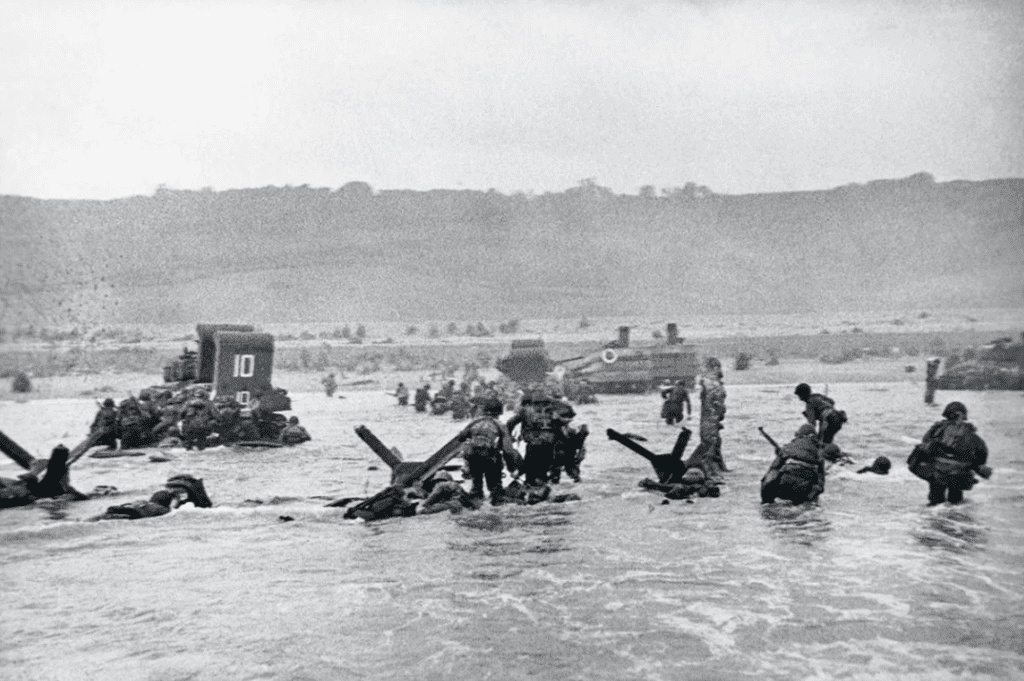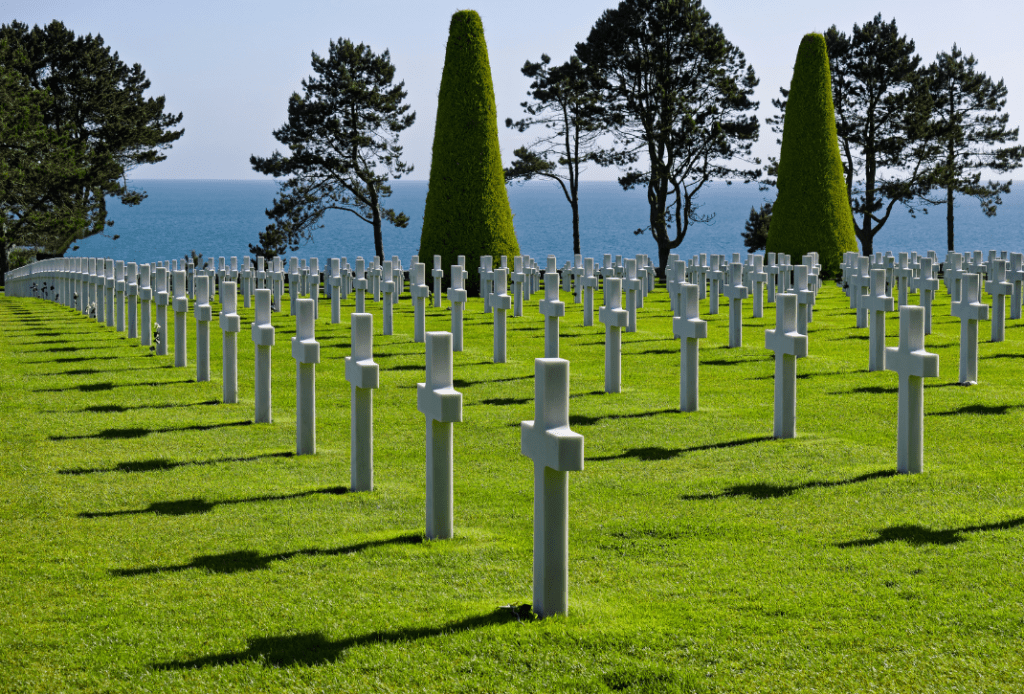May, 1944: Paris was a nervous wreck, overwrought with anxiety, tension, and hope as it continued to wait for le Débarquement. Rumours of an impending Allied landing had been whispered throughout the Nazi-occupied city all springtime long, but it was now summer, the weather stifling, the atmosphere oppressive. The German authorities were more wary and suspicious than ever, ratcheting up arrests and becoming more ruthless by the day. Meanwhile, Parisians lay as low as possible, while furtively listening to the BBC for the first signal that freedom was not far away.

Finally, on 1st June, the BBC’s ‘Radio Londres’ programme broadcast the opening lines from Paul Verlaine’s poem Chanson d’Automne: ‘long sobs of autumn violins.’ This was code for: expect D-Day within two weeks.
Only four nights later came a flurry of cryptic announcements: ‘The carrots are cooked,’ ‘The flowers are very red,’ ‘The dice are on the table’ … Each phrase was, in fact, a code that gave specific orders to various Resistance circuits. The final message — ‘The children get bored on Sunday’ — was the ultimate call to arms. It declared: we’re on, this is happening, get ready. Across Paris, and France, résistants mobilised under the cover of darkness, playing their part in what would be the largest seaborne military invasion in history.

As dawn broke on 6th June 1944, 6,939 vessels, supported by 11,590 aircraft, landed more than 130,000 troops on a stretch of Normandy coastline — the beaches we now know as Utah, Omaha, Gold, Juno, and Sword. The soldiers were mostly American, British, and Canadian, but some troops hailed from France, Australia, New Zealand, Belgium, Norway, Poland, Greece, Luxembourg, and Czechoslovakia. By the end of this long, bloody, terrifying day, 4,414 Allied soldiers had died. It was not, however, in vain: the Liberation of France was successfully underway.
D-Day had been exhaustively planned and practised since late-summer 1943. Some British and Canadian servicemen had, in fact, been training for a future invasion for four years, since before America joined the war. By May 1944, almost three million soldiers were camping in southern England, waiting for mobilisation orders from Dwight D. Eisenhower, the Supreme Commander of the Allied Expeditionary Force.
Beyond the armed forces, countless others played their roles: the families who hosted soldiers; the code-breakers at Bletchley Park who uncovered, and foiled, many German plans; the double agents who created successful misinformation campaigns; the French Resistance operatives who fed on-the-ground information back to the Allies, and laid the groundwork for the future invasion; the weather forecasters who helped to determine when conditions were optimal …
For many Parisians, withering after four years of brutal Occupation, D-Day was a question of ‘when’ — but for Allied leaders, the ‘where’ was just as important.

The easiest point of attack would have been Calais, and misinformation helped to keep this idea in play until the very last minute. Meanwhile, Normandy was evaluated. In anticipation of an invasion somewere in France, more than two years before the landing the BBC had launched an appeal for postcards, photographs, and guidebooks to French beaches. The Normandy material gathered among the ten million responses proved invaluable. A more accurate survey was then undertaken by soldiers and engineers in small submarines who, under German noses in the dead of night, snuck onto various beaches to assess their ability to hold large loads of transport. Artists then created models of the coastline to assist military planners.
All the while, troops trained in southern England, including a ‘ghost army’ stationed over at Dover, to continue the charade that Calais was still the main object of attention. This deception unit employed artists and engineers, as well as professional soldiers, and created an army of inflatable trucks and tanks, along with other forms of subterfuge such as fake radio traffic. The designer Bill Blass and painter Ellsworth Kelly were two of the talents who helped to pull off this genius plan.
One reason the Germans continued to expect Calais would be the Allies’ target was its port facilities. A working harbour, of course, would have made landing, and offloading, all the easier than attempting to do so on a beach. But another sign of the meticulous and inspired planning that went into D-Day was the solution that the Allies would simply build their own pre-assembled ports, and float them over with the D-Day armada.
While these ports were being built and the troops being trained, another key preliminary step was taken: the Allies began to bomb various transportation targets in France, to make it harder for German troops stationed around the country to advance to Normandy. The bombings were also strategic in that they continued the ruse that Calais was the intended D-Day destination. Sadly, there was a steep human toll. In the French capital alone, four bombing raids on the industrial outskirts in April 1944 killed 1,113 Parisians.
Still, Parisians kept the faith, as they had done since they’d first heard General Charles de Gaulle’s BBC broadcast of 18th June 1940, when he’d called on France to keep the ‘flame of French resistance’ burning. Finally, on the morning of 6th June 1944, that voice that had given so many French people comfort and hope now declared that the ‘supreme battle has begun’ and asked everyone to ‘fight the enemy with all the means at their disposal.’

It would take until late August for Paris to be liberated. The Allies battled for seven weeks to gain control of Normandy and Brittany, and then slowly but surely make their way eastwards, onto Paris and eventual victory. In this time, thousands more soldiers made the ultimate sacrifice as they fought not just for France, but for freedom from fascism, to make the world a better place.
Lest we forget.
For further reading, try Sand & Steel: A New History of D-day by Peter Caddick-Adams.

